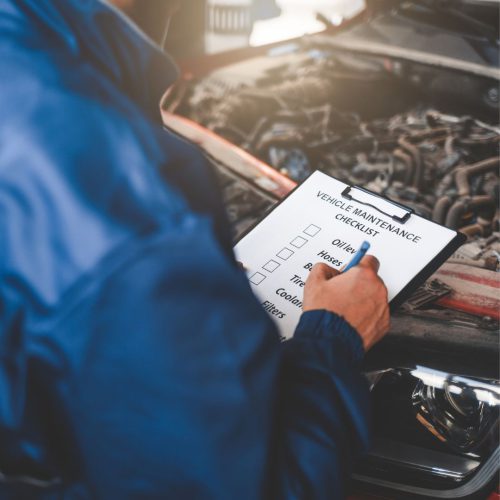How Smart Reconditioning and Timely Follow-Ups Drive Real ROI
-
Secure Transportation Without Delays
Auction Purchases to Profits. Once you’ve won a vehicle at auction, the clock starts ticking. Quick transport is crucial—not only to preserve any arbitration rights but also to limit potential risks. A delayed delivery could cost you more in the long run. Get the vehicle to your lot as soon as possible so your team can perform a post-sale inspection promptly.
-
Don’t Skip the Initial Check
Even if the buyer at the auction did their homework, it’s wise to have your technician give it a once-over. A 10- to 15-mile test drive, ideally reaching highway speeds, helps reveal transmission issues, engine irregularities, or other major problems, especially while still within the arbitration window. Follow this with a lift inspection to check for frame or structural concerns.
-
Move Fast to the Checklist Phase
If the vehicle passes the initial tests, it’s time to move it to staging for a full pre-sale checklist. This step depends heavily on your service department’s availability. Your most experienced tech should handle the inspection—they’ll know when to repair versus replace, which can save money on unnecessary parts.
-
Focus on Safety and Reliability
The goal of reconditioning isn’t just aesthetics—it’s ensuring the vehicle is safe and dependable. A reliable car keeps your customer happy and mobile, reinforcing their confidence in the purchase and helping ensure they make their payments without interruption.
-
Let the Right People Shop for Parts
Once the inspection is complete, it’s time to source parts. While some components can be reused or salvaged, others, like batteries or alternators, may need to be purchased new. Delegate this task to your service manager or office assistant—your technicians should stay focused on hands-on repairs, not shopping.
-
Don’t Start Work Until Everything Arrives
Avoid tying up a lift with a disassembled vehicle. Wait until all necessary parts are in before beginning repairs. This helps maintain shop efficiency and prevents bottlenecks caused by back-ordered parts.
-
Assign Repairs Based on Skillsets
Organize your techs by their strengths—diagnostics, part installation, heavy repairs—and assign tasks accordingly. This helps reduce guesswork and prevents unnecessary part replacements, optimizing both time and budget.
-
Final Test Drive Before Front Line Placement
Once repairs are complete, conduct a post-reconditioning test drive. This confirms all issues are resolved and that the vehicle is truly front-line ready. The last thing you want is for a retail customer to discover a problem during their test drive.
-
Auction Purchases to Profits. Daily Lot Checks for a Seamless Customer Experience
Make it standard practice for a lot attendant or service staff to start and inspect every front-line vehicle daily. This proactive measure ensures each car is ready to impress and prevents last-minute issues from ruining a potential sale.

